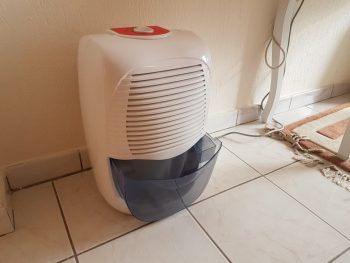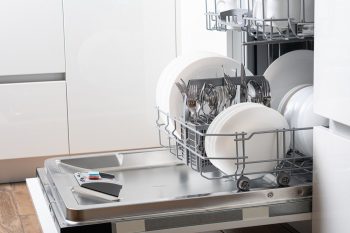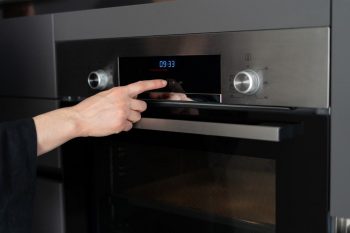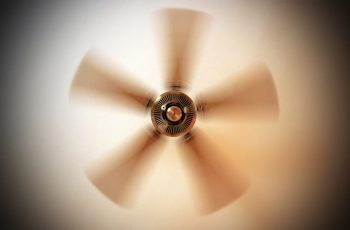
Choosing the right size for an over-the-range microwave is about more than just cooking convenience – it’s about enhancing the functionality and aesthetics of your kitchen. This comprehensive guide will help you determine the ideal size for your microwave, taking into account factors such as your kitchen layout, cooking needs, and design preferences.
The size of the over-the-range microwave you need depends on your kitchen space, cooking needs, and design preferences. Typically, these microwaves are around 30 inches wide, with an interior capacity ranging from 0.8 to 2.1 cubic feet. You should measure the space where you plan to install it, considering the external dimensions, internal capacity, ventilation space, door clearance, and distance from the cooking surface. Smaller microwaves consume less energy, and there are various design trends to incorporate them into your modern kitchen.
Understanding Microwave Sizes
Over-the-range microwaves typically have widths around 30 inches, matching the standard width of the range below and the standard cabinet width where the microwave will be mounted. The interior capacity usually ranges from 0.8 cubic feet for compact models up to 2.1 cubic feet for full-sized models. Heights are generally around 17 inches, with low-profile models being shorter. Closed-door depths range from approximately 16 to 20 inches, while open-door depths range from roughly 34 to 39 inches.
Determining the Right Size
When choosing an over-the-range microwave, you need to consider the available space in your kitchen, your cooking requirements, and the dimensions of your existing microwave enclosure or the space where you plan to install it. Here’s what you should keep in mind:
- External dimensions: Measure the height, width, and depth of your existing microwave enclosure or the space where you plan to install it. Remember, it’s acceptable for over-the-range microwaves to extend below cabinets as long as you maintain a 30-inch clearance from the cooktop.
- Internal dimensions (capacity): The capacity of over-the-range microwaves typically ranges from 1.5 to 2.2 cubic feet. This indicates how much cooking space is available inside the microwave.
- Ventilation space: You should generally account for 1″ of ventilation space between the microwave and the wall behind it.
- Clearance for the open door: Allow at least 3″ of space from the edge of the counter to the open microwave door to avoid tipping.
- Distance from the cooking surface: Ensure there is a minimum of 30 inches between the cooking surface and the bottom of the cabinet above.
By considering these factors, you can choose an over-the-range microwave that fits your kitchen space and meets your cooking needs.
Impact of Microwave Size on Energy Consumption
The size of a microwave oven can affect its energy consumption. Generally, smaller microwaves consume less energy than larger ones. Compact microwaves typically use between 500 and 800 watts, while regular-sized microwaves use 850 to 1800 watts depending on the model.
Design Trends for Microwaves in Modern Kitchens
Incorporating a microwave into your modern kitchen design can be done in various ways:
- Built-in microwave: Integrating the microwave into cabinetry or an island creates a seamless look and saves counter space.
- Microwave drawer: Installed below the countertop, a drawer-style microwave offers easy access and a discreet appearance.
- Above the counter: Placing the microwave above the counter, often in combination with other appliances, creates a sleek, integrated look.
- Concealed microwave cabinet: A concealed cabinet allows you to hide the microwave from view when not in use, maintaining a clean and minimalistic look in your kitchen.
Each of these options has its pros and cons, so it’s essential to consider factors such as accessibility, available space, and personal preferences when deciding on the best way to incorporate a microwave into your modern kitchen design.
In conclusion, choosing the right size for your over-the-range microwave is a crucial step in optimizing your kitchen’s functionality and aesthetics. Be sure to consider all the above factors and consult with a professional if necessary. Happy cooking!
Frequently Asked Questions
Can I install an over-the-range microwave without a vent?
Yes, you can install an over-the-range microwave without a vent. However, it’s important to note that venting is crucial for removing heat, steam, and odors produced during cooking. If your microwave doesn’t have an external vent, it will use a recirculating fan to filter the air and then release it back into the kitchen.
What is the standard size for an over-the-range microwave?
The standard external width for an over-the-range microwave is approximately 30 inches to match the standard width of a range and the cabinet above it. The standard internal capacity usually ranges from 1.5 to 2.2 cubic feet.
How much clearance is needed above a range for an over-the-range microwave?
It’s generally recommended to have a minimum clearance of 30 inches between the cooking surface and the bottom of the cabinet above where the microwave will be installed.
Can I install an over-the-range microwave in a cabinet?
Yes, you can install an over-the-range microwave in a cabinet. However, it’s essential to ensure that the cabinet is deep enough to accommodate the microwave and that there’s enough clearance for ventilation and the open door.
Is a larger microwave more powerful?
Not necessarily. The power of a microwave is measured in watts, not its physical size. However, larger microwaves often have higher wattage, meaning they can heat food faster. But it’s always best to check the specific wattage of the microwave model you’re considering.












